How to give your hike a high-tech upgrade
How to enjoy the convenience of modern tech without the distraction from nature.

At its heart, hiking is about getting away from technology. Stuffing everything you need to survive for a few days into a bag and disappearing into the woods is as much about breaking free of the daily Twitter grind as it is about pushing yourself physically and connecting with nature. And while there's certainly something to be said for really roughing it, there's no rule that demands you give up all the creature comforts of modern living to enjoy camping. (If there were, all these ultralight hikers would be boiling water over a fire instead of using filters and stoves.) In fact, part of the allure of backpacking is all the gear. And anyone who tells you otherwise is full of it.
So, how do you boost the tech quotient of your backcountry setup without dragging all your figurative technological baggage with you? Well, let's start by upgrading some of basics, like water purification. If you're really old school you could go with some iodine or chlorine tablets. But, let's be frank: They taste like garbage. The more common solution is a filter, but they can clog, are sometimes tiring to use, and are quite a bit bulkier than a bottle of purification tablets.
SteriPen Ultra
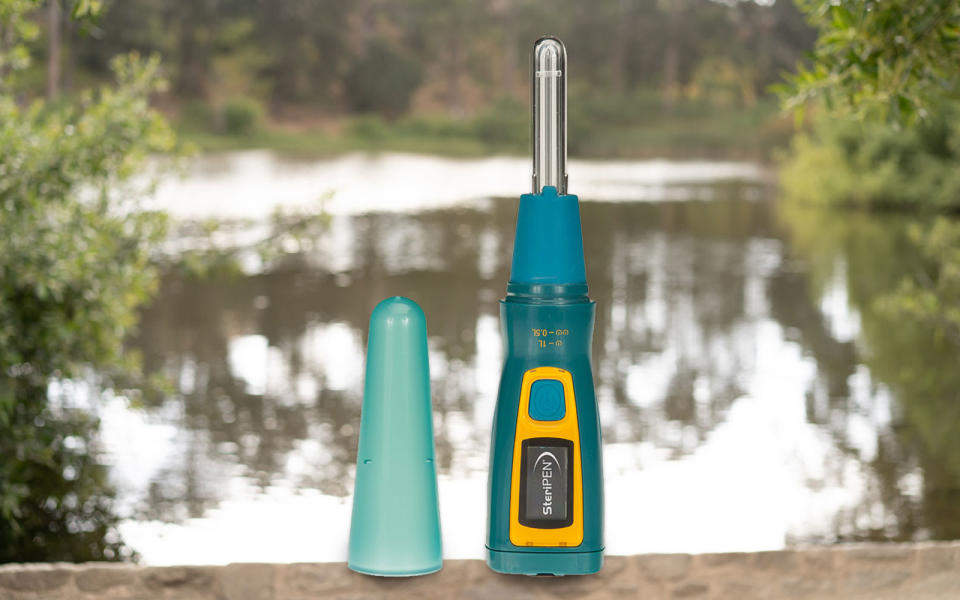
The high-tech option is a Steripen, which uses UV light to kill bacteria and viruses. The flagship Ultra model has a rechargeable lithium ion battery that can clean up to 50 liters of water before it needs to be plugged back in. The one thing to remember is that a Steripen won't remove debris from your water. So it's a good idea to use a barrier like a bandana when filling up your bottle to keep dirt and grit out.
Buy SteriPen Ultra at Amazon - $110
BioLite Headlamp 330
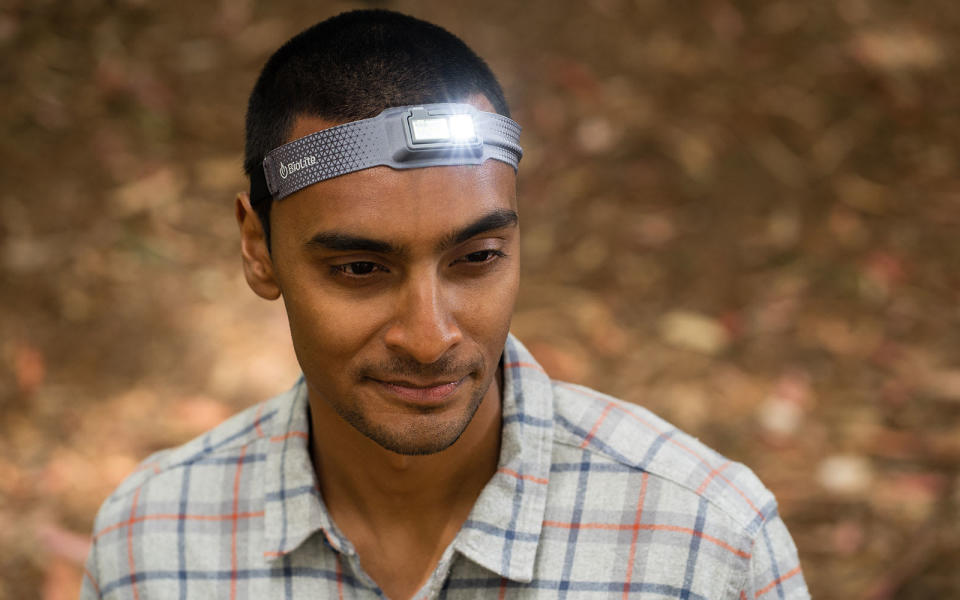
Another easy upgrade is your lighting. Biolite's Headlamp 330 is relatively no-frills but extremely comfortable and smartly designed. Often headlamps with rechargeable batteries have one of two flaws -- either they put the batteries in the lamp at the front of your head, making the whole thing very unbalanced, or, if they do stick the battery in the back, it's so bulky that wearing it for long periods gets uncomfortable. The Biolite has a smaller battery pack that will still last up to 40-hours of run time on a single charge and won't make you feel like you're carrying a laptop on your head.
The 330 has all the features you'd expect in a modern headlamp: white flood and spot mode (which can be combined and run simultaneously), a strobe, and a red flood for preserving your night vision. But if you spring for the Extended Pack, you get two super useful accessories. One is the Charge 20 powerbank, which will give you hours more use out of the headlamp. And, thanks to pass thu (and the placement of the battery) you can actually charge the Headlamp 330 while wearing it. The other is a stuff sack, which might not sound super necessary, but its made of a translucent light-diffusing material that turns your headlamp into a lantern when hung from the roof of a tent or lean-to.
Buy Headlamp 330 at Amazon - $60
Biolite SiteLight XL
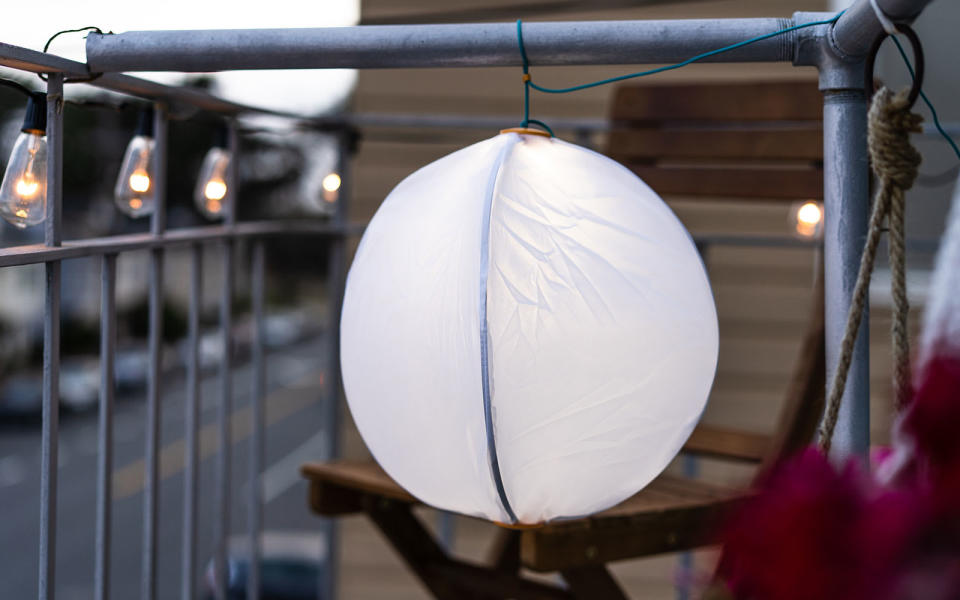
Obviously, if your headlamp is hanging from a tree, it can't also be on your head. The solution: a portable lantern like Biolite's SiteLight XL. It's a fabric lantern that's big and bright enough to keep your campsite illuminated, it also collapses down to about the size of a PB&J (that classic metric of volume) for easy packing. And since it's USB-powered, you can use the same Charge 20 to get it going.
Buy SiteLite XL at Biolite - $35
Biolite Solar Panel 10+
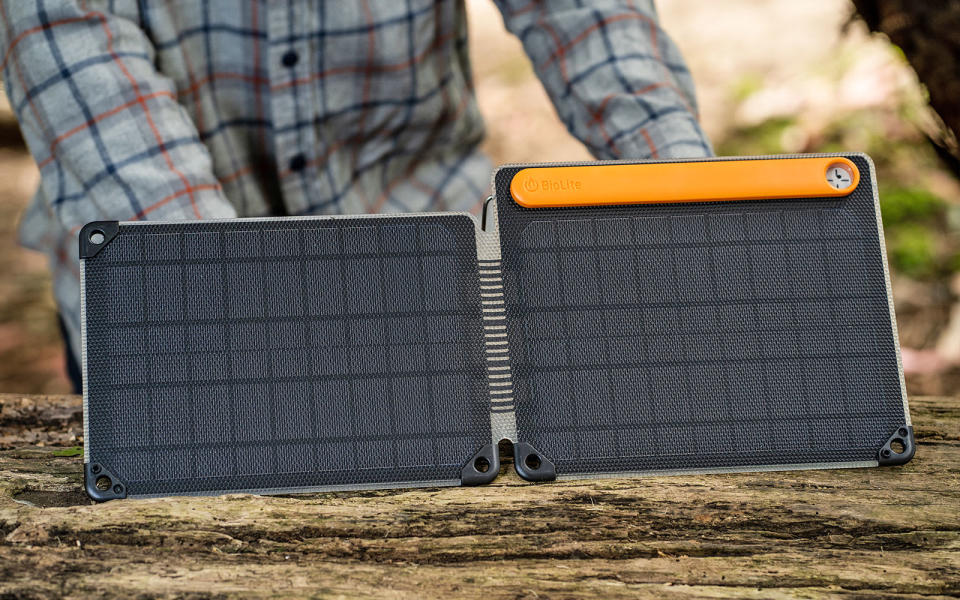
Of course, now you're talking about using a lot of electricity, which means you need a way to keep things charged up. And, since we're talking about Biolite, we might as well mention its Solar Panel 10+. It's the largest and heaviest of the company's panels, but its output of 10 watts and integrated 3000 mAh battery will keep your headlamp, lantern, Steripen and phone topped off.
Buy Solar Panel 10+ on Amazon - $140
Otterbox Defender Series
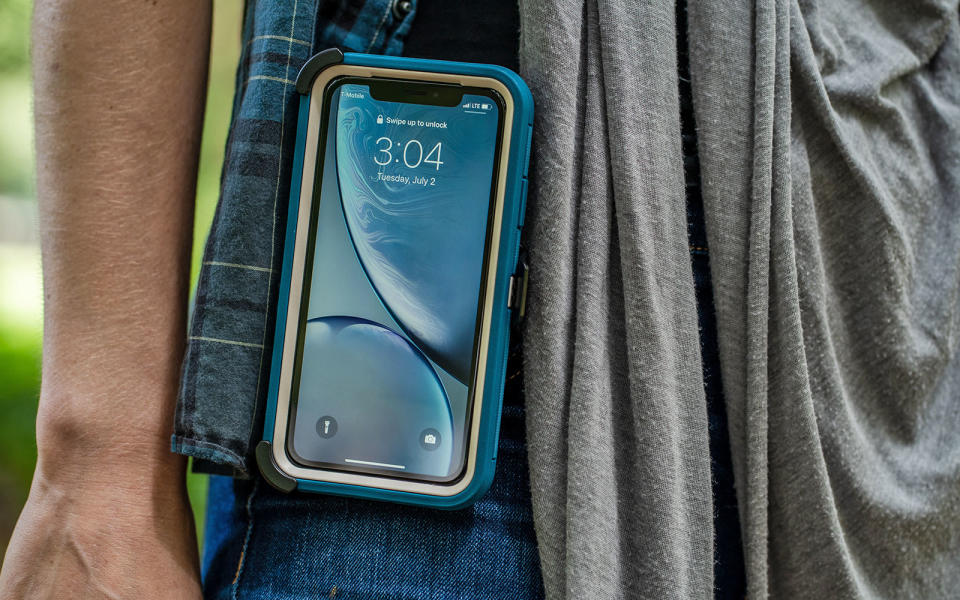
And yes, we know you will bring your phone, and you should. For one, it could be super useful in case of an emergency. And, even without internet it can serve as an e-reader to help you wind down at night. But, honestly, more important than keeping your phone charged in the wilderness is making sure it can survive the physical demands. In short: Don't go without a case. There are tons of options for rugged cases out there, but we really like the Otterbox Defender series. It has multiple layers that help absorb shock in case you drop it. Best of all, they're available for an absolutely insane variety of phones -- iPhone, Pixel, Galaxy S10, Note 9, LG G8... the list goes on.
Buy Defender Series Case at Amazon - $35
Leatherman Free P2
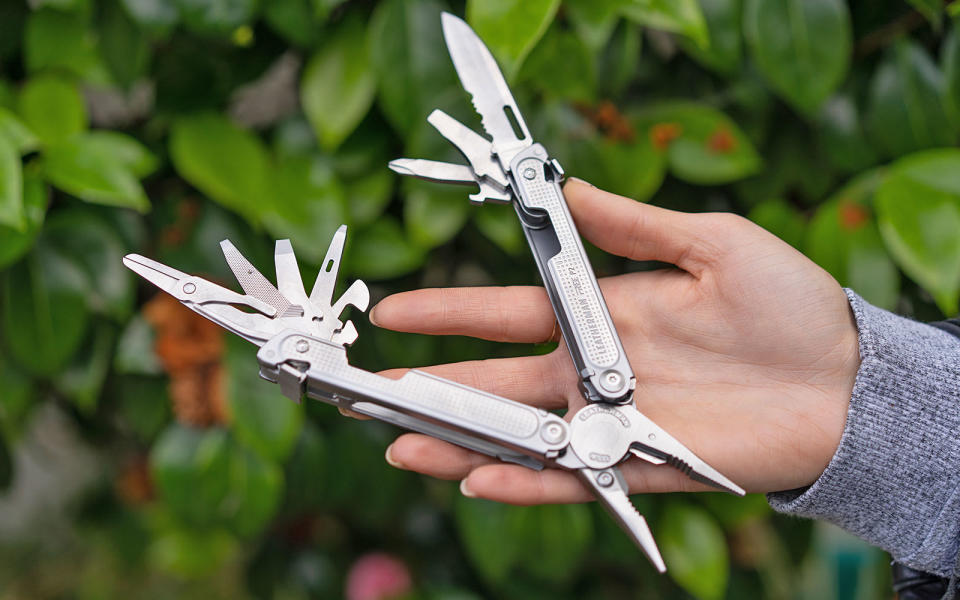
Another essential is a knife, but don't settle for an old-school pocket knife like you had back in your scout days. Instead, upgrade to a multitool. I can't recommend the Leatherman Free P2 enough. I've been carrying the company's Juice CS4 for many, many years. (I've checked baggage on my way to CES just so that I wouldn't have to leave it behind.) But the Free P2 has quickly replaced it. The real game changer here is the ability to open all the tools quickly and easily with one hand. No more need to find a tool to open another tool. And the blades and everything lock in place, so you won't have to worry about accidentally closing it on your hand.
Buy Leatherman Free P2 at Amazon - $105
Garmin GPSMAP 66i
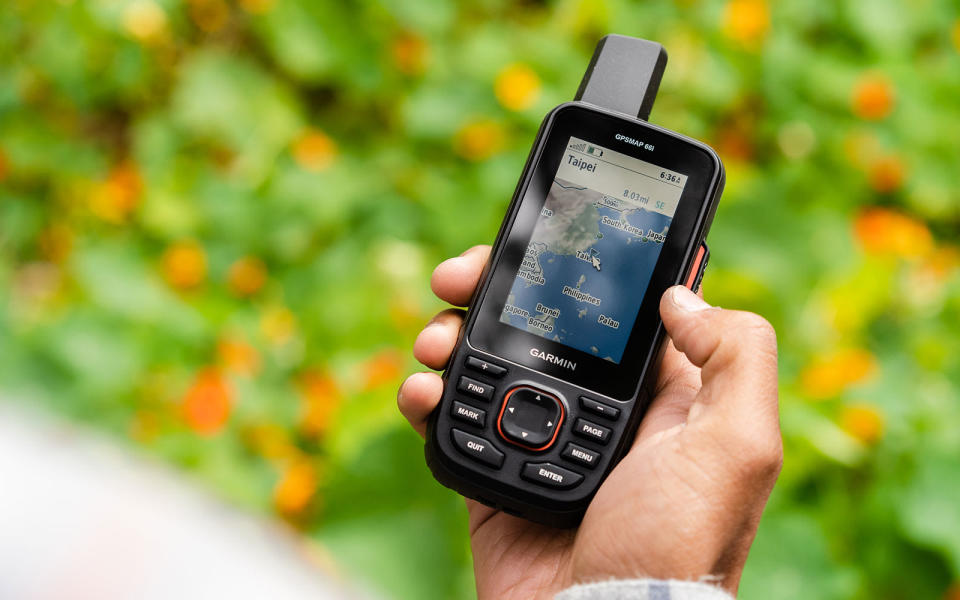
Alright, but what about something more traditionally "gadgety"? Well, you might want to check out the new Garmin GPSMAP 66i. To be completely honest with you, I'm generally not a fan of hiking GPS units. But this one from Garmin is pretty solid. It typically gets 35 hours on a charge, but in "expedition mode" you can extend that to a whopping 200. And, while you're out in the field, it does more than just put trail maps in your hand.
The topographic maps are useful for finding your way if you like to travel off trail, while a cellular data connection feeds you live weather updates -- so you have plenty of notice to hunker down in the face of an approaching storm. Oh, and if you happen to get lost or hurt, you can use the built-in inReach technology to send an SOS message... provided you pay for the subscription.
Garmin Fenix 5X Sapphire
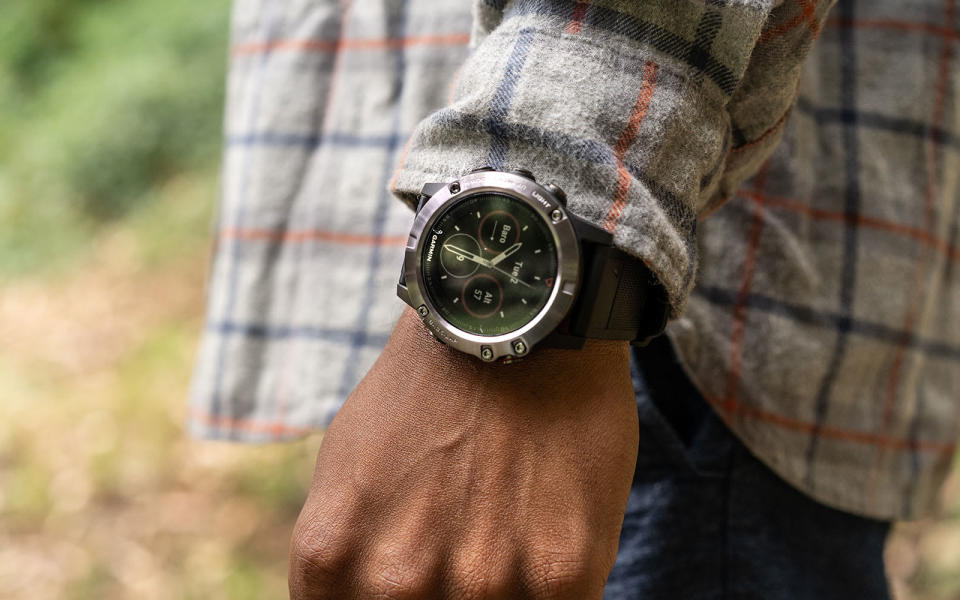
And if you really want a touch of high-tech luxury out on the trail, Garmin's Fenix 5 X Sapphire might be the ticket. It's a high-end smartwatch built for the outdoors. It comes with maps for hiking and cycling, can track your training at the gym, and with its built-in GPS, GLONASS and Galileo receivers, it'll be almost impossible to get lost with. If paired with your phone, it can even notify your emergency contacts with just the push of a button if you get hurt or lost.
Then there are the standard smartwatch features like notifications, Spotify integration and support for Garmin Pay. Oh, and it actually looks decent too, so you won't want to immediately hide it in your bag when you wander back into town.
Buy Fenix 5X Sapphire at Amazon - $439
Nikon Monarch 5
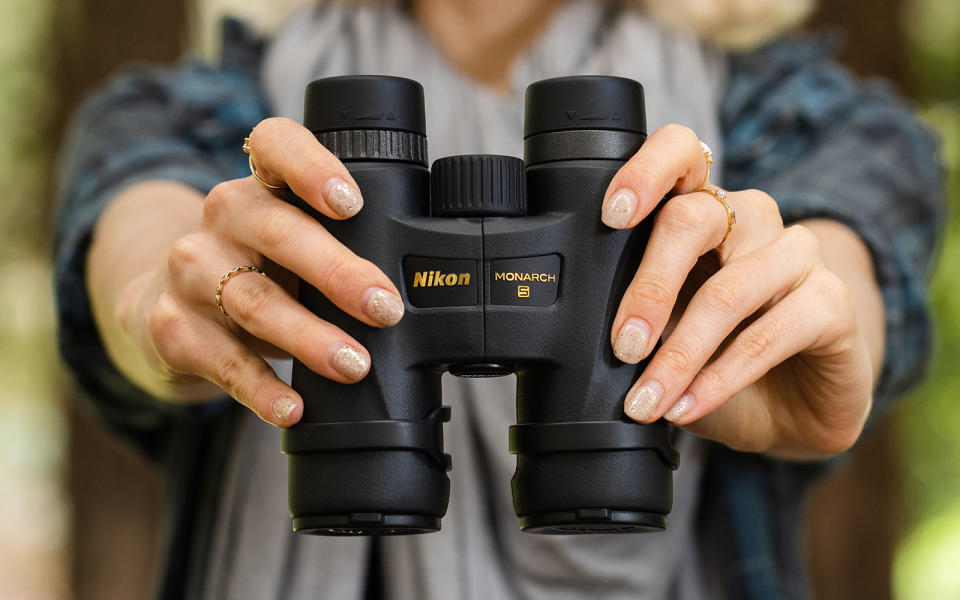
One last thing to think about bringing with is a pair of binoculars. These aren't necessarily super high-tech, but they can bring the wonders of nature closer to you -- especially the wildlife, which, let me be blunt here, you should not be disturbing. The Monarch 5 from Nikon (specifically the 10x42 model) come highly recommended. They're reasonably compact, waterproof and won't fog up on you while you're scanning those distant mountaintops.
Buy Nikon Monarch 5 at Amazon - $277
Add in a way to brew a decent cup of coffee (I personally use the MSR MugMate) and you should be good to go. And if you're not... if this is simply just not enough modern convenience and luxury for you. Maybe look into glamping. I hear it's all the rage.

